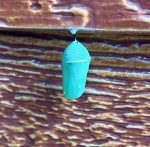I’ve gotten a few calls from the university today — I was worried that something important had happened to my lab, but no, administrators were just concerned because of this event happening this evening.
Yeah, those a-holes are speaking at my university, led by Knowles, one of the negligible intellects at the Daily Wire who has been on the anti-trans bandwagon for a while now, and with little else to say. I imagine he’ll be on the stage at the Twin Cities campus trying to stir up a little hate this evening, and in an over-abundance of caution, the administration is asking to temporarily suppress my information on the university web site, with my consent.
I agreed. I can’t run away very fast nowadays, so better safe than sorry.
They should have called this the “American Go Away Tour.”









